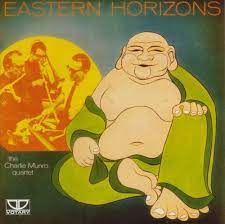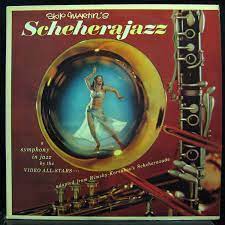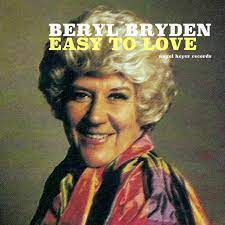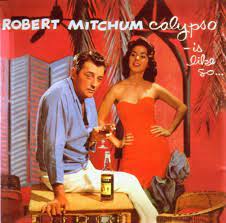
Daily Dose Of Jazz…
Charles Robert Munro was born on May 22, 1917 in Christchurch, New Zealand. While in his teens he became quite proficient on several saxophones and by 21 had moved to Sydney, Australia where he played in the bands led by Myer Norman and Wally Parks. In addition he worked as a sideman on various nightclub, theater, and ship gigs.
Serving in the military during World War II, Charlie went on to work with Wally Norman at the Roosevelt nightclub in Sydney. In 1950 he played with Bob Gibson, then joined the Australian Broadcasting Commission’s dance band in 1954, continuing to perform with the group through 1976 as a composer and arranger.
He worked extensively with Bryce Rohde in the 1960s, participating in many of Rohde’s Australian jazz experiments. He led his own bands toward the end of his career, and also worked with Georgina de Leon.
Saxophonist and flutist Charlie Munro, who also played the cello and delved into free jazz movement, transitioned on December 9, 1985, in Sydney.
More Posts: arranger,bandleader,cello,composer,flute,history,instrumental,jazz,music,saxophone

Three Wishes
Carl Pruitt had three simple answer to the question of three wishes posed by Pannonica:
-
-
“Health.”
-
“Wealth.”
- “Power.
-
*Excerpt from Three Wishes: An Intimate Look at Jazz Greats ~ Compiled and Photographed by Pannonica de Koenigswarter
More Posts: baroness,bass,history,instrumental,jazz,music,pannonica,three,wishes

Daily Dose Of Jazz…
Skip Martin was born Lloyd Vernon Martin on May 14, 1916 in Robinson, Illinois. He was an active arranger during the swing jazz band era of the 1930s and 1940s. working with Count Basie, Charlie Barnet, Benny Goodman and Glenn Miller. He doubled as a reedist with the latter three, and recorded with trumpeter Cootie Williams in the early 1940s as well.
Later in the 1940s Skip worked with Les Brown before moving to Los Angeles, California in the 1950s, where he did extensive work as a staff and freelance orchestrator, studio conductor and popular song arranger Tony Martin, The Pied Pipers, the Andrews and De Castro sister groups, and Barbara Ruick.
Martin recorded three albums as a leader and produced material for West Coast jazz and swing concept albums such as Scheherajazz in 1959 for Somerset Records. In 1963 he joined Nelson Riddle on a dream team of arrangers working on the Sinatra-Burke compilation albums for the ambitious Reprise Musical Repertory Theatre project, featuring the singing members of the Rat Pack, plus Bing Crosby, Rosemary Clooney and Jo Stafford.
In Hollywood, Skip was one of the team of orchestrators contributing to Singin’ in the Rain, Guys and Dolls, and shared arrangement credits with Conrad Salinger on Summer Stock, Kiss Me Kate and Funny Face, where a few songs of the Great American Songbook came from. He retained sole credit as orchestrator for Judy Garland’s comeback vehicle A Star Is Born, which gave us The Man That Got Away and It’s A New World.
Saxophonist, clarinetist, and music arranger Skip Martin transitioned on February 12, 1976, in Los Angeles, California.
More Posts: bandleader,clarinet,history,instrumental,jazz,music,saxophone

Daily Dose Of Jazz…
Beryl Audley Bryden was born May 11, 1920 in Norwich, Norfolk, England and was an only child Her enthusiasm for jazz music started during her teenage years, becoming a member of the National Rhythm Club when she was 17 and became secretary of the local branch in 1941. An ardent jazz fan she established a Nat Gonella fan club in her teens, before taking up the washboard and singing, influenced by Bessie Smith.
Moving to Cambridge in 1942 at 22, post WWII she returned to London with the hope of starting a career in music/ She worked with Mick Mulligan and George Melly at London jazz venues and became a supporter of visiting American jazz acts when the Musicians Union ban was lifted. Beryl befriended, amongst others, Buck Clayton, Louis Armstrong and Bud Freeman, with whom she recorded.
By 1949 she formed her own group called Beryl’s Back-Room Boys and later worked with Mike Daniels. In 1955 she joined the Chris Barber band on washboard, and played on Rock Island Line with Lonnie Donegan on vocals. This track helped trigger the ‘skiffle’ craze of the late 1950s.
Graduating to the Monty Sunshine jazz band she covered Bessie Smith’s Young Woman’s Blues, Gimme a Pigfoot (And a Bottle of Beer, and Coney Island Washboard Blues, which demonstrated her washboard technique.
She remained active at the end of the British trad jazz boom, and became particularly popular in Northern Europe, playing with the Ted Easton Jazz Band and The Piccadilly Six. She was active well into the Nineties playing with the Metropolitan Jazz Band, Digby Fairweather, Nat Gonella and her own Blue Boys.
Vocalist Beryl Bryden, whose final recording was with Nat Gonella shortly before her death, transitioned from lymphoma, aged 78, at St Mary’s Hospital, Paddington, England on July 14, 1998
More Posts: bandleader,history,instrumental,jazz,music,vocal,washboard

Daily Dose Of Jazz…
Frank Carlson was born May 05, 1914 in New York City, New York. Starting to learn at an early age, there were occasional early rhythm sections that featured a form of sibling musical rivalry between him and his bassit brother Anthony that some bandleaders swear produces the tightest-possible timekeeping. Starting his career during the swing era of the big band, he held down the drums in the Woody Herman Orchestra from 1937 to 1942. During the Forties he was chosen by Fred Astaire to play drums on his movie soundtracks in the 40’s.
Coming out of the big band era Carlson became a busy studio-session drummer who played on a huge number of hit records, including those by Doris Day, Bing Crosby, and Elvis Presley. His cache with hipsters comes mostly from getting the studio call to back the brilliant actor, hellraiser, and occasional recording artist Robert Mitchum.
The drummer also collaborated early on with leaders such as Gene Kardos and Clyde McCoy. Tiring of the pounding required for his drums to be heard above the roaring stampede of Herman’s herd, Frank headed to the West Coast and a freelance career. His phone would ring with a variety of offers, from the aforementioned studio activity to percussion responsibilities with the Los Angeles Philharmonic.
He played on film soundtracks, and supposedly pointed out the chariot race in Ben Hur as one of the few experiences playing behind something that was louder than the Herman band. The height of his busy years were the ’50s and early ’60s. By the time pop groups began playing drums on their own records, drummer Frank Carlson retired to Hawaii. At present, there is no information as to the current status of his living or death.
More Posts: drums,history,instrumental,jazz,music



